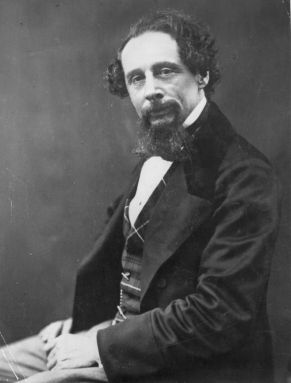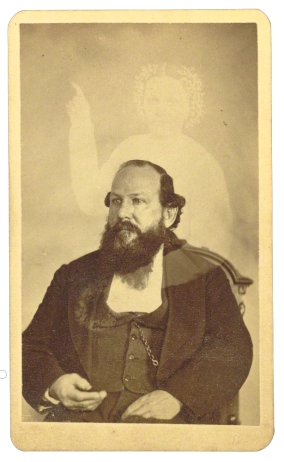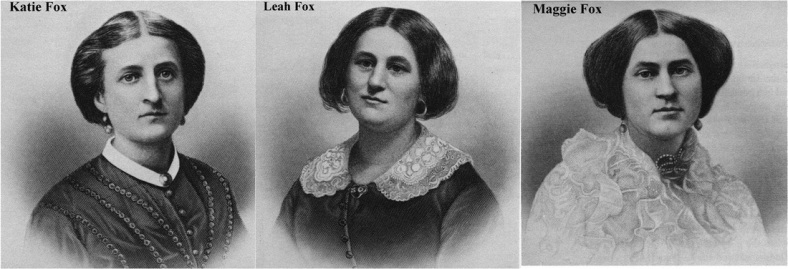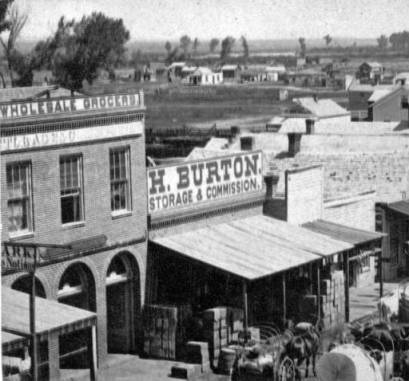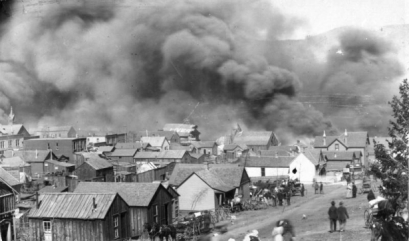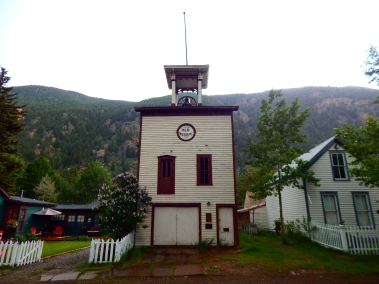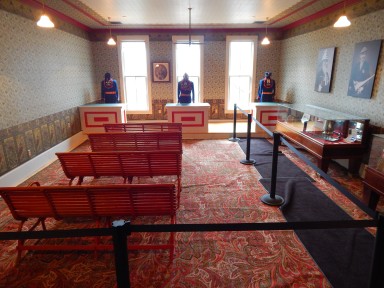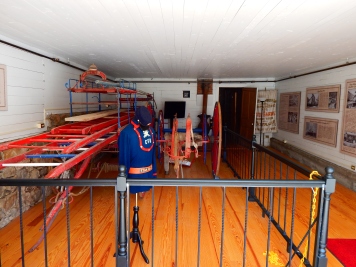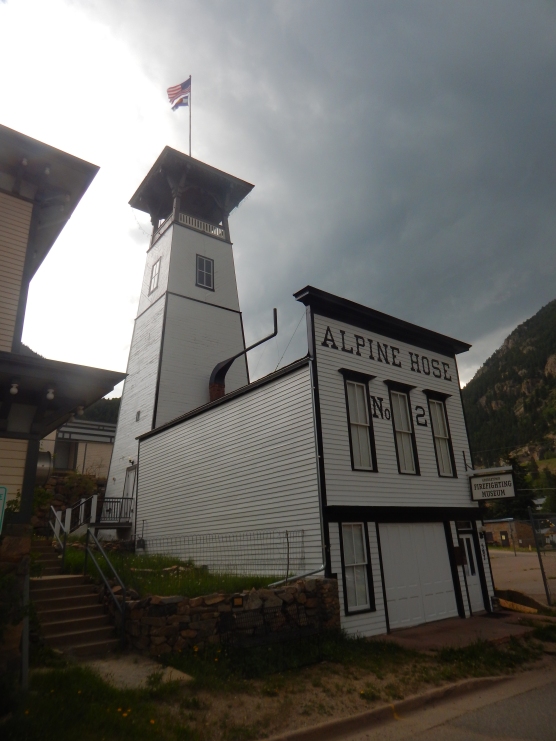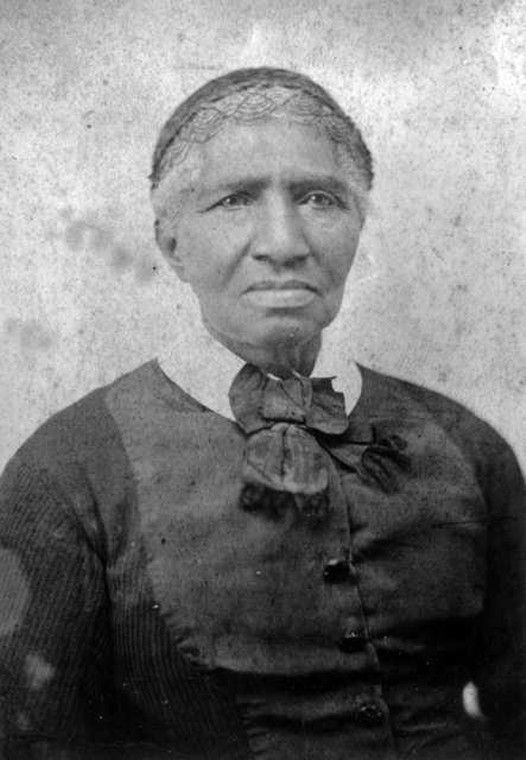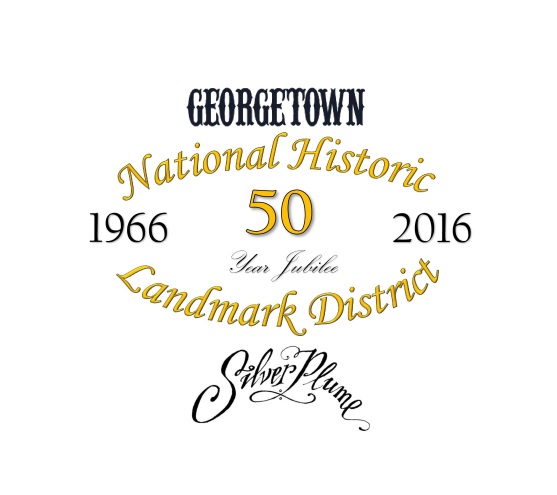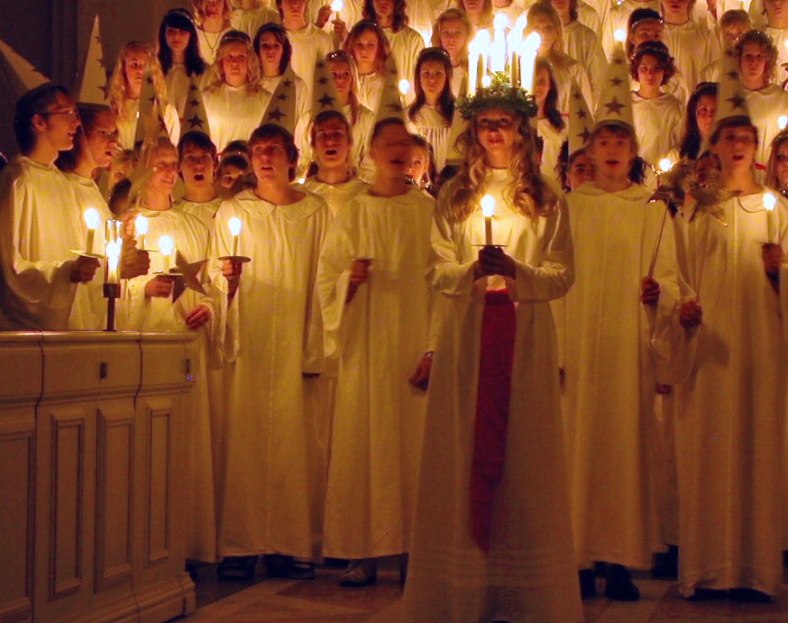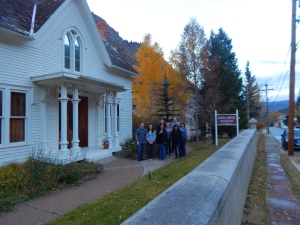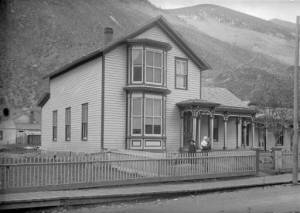by Tom Mensik
To people in Georgetown, Washington D.C must have seemed like it was on the moon. Prior to 1876, Colorado was just a territory, beholden to the Federal Government for a decision on statehood. Reconstruction in the South after the Civil War was becoming very unpopular, especially with White’s who were actively preventing the newly freed Black population from voting and charting their own political courses. William Hamill was a Republican during this tumultuous era of reconstruction and scandal. Over his lifetime, William Arthur Hamill saw his adopted territory become a state, Presidential scandals, corrupted elections, and sadly three Presidential assassinations between 1865 and 1901 (Lincoln 1865, Garfield 1881, and McKinley 1901). All this time Hamill played an integral political role in the state and Republican party and observed an important period of rebuilding and healing in American history.
THE THREE PRESIDENTS ASSASSINATED DURING HAMILL’S LIFETIME AND POLITICAL CAREER
Prior to 1869, and Grant’s ascension to the White House, President Andrew Johnson had tried to implement his own plan for Southern Reconstruction. Johnson had the shoes to fill with Abraham Lincoln, who was slain by an assassin in April of 1865, a few short days after the surrender of Confederate General Robert E. Lee at Appomattox. Andrew Johnson was a Southern Democrat that had stayed loyal to the Union throughout the Civil War. His policies for Reconstruction were less than favorable to the newly acquired rights of the freed slaves. He returned property’s in the South held by the Union to former owners which helped to reestablish the Southern Aristocracy. Johnson didn’t even meet with African American leaders regarding his plans for their futures. Due to the economic conditions of the situation, many former slaves were forced back to work with their former masters. In addition, Black voting rights were suppressed in the South, both legislatively and with violence. The Black population in the South had little to no say in the post-Civil War reconstruction.
President Johnson faced opposition from the Republican-held Congress. He faced impeachment over his attempted firing of Secretary of War Edwin Stanton, which violated the Tenure of Office Act, which stated the President cannot fire an appointee to the Cabinet that was confirmed by the Senate. Johnson narrowly remained in office. The damage had been done. The radical wing of the Republican Party not only opposed his rejection of their act but his policies on Reconstruction. By not enforcing the protection and rights of freed slaves, the nail in Johnson’s coffin was hammered. Ulysses S. Grant was one of Johnson’s critics.
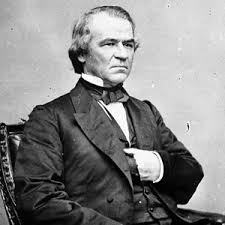
President Andrew Johnson had one of the most tumultuous tenures in office. He was one of two presidents to face impeachment.
Andrew Johnson even hoped to get the Democratic nomination for the 1868 Campaign, despite the impeachment controversy. Instead, the Democratic nomination went to Horatio Seymour. Seymour had been a staunch supporter of Johnson’s Reconstruction plan. Grant and the Republicans wanted to reform the entire Reconstruction program. The former Union General won the election in a landslide. Despite U.S Grant’s victory, his administration was plagued with several scandals. William Arthur Hamill was most likely aware of these political developments. It was during this period Hamill began to get politically active and grow his fortune. President Grant even visited Georgetown on two occasions during his Presidency. While not confirmed, it is reasonable to think that an up and coming William Hamill met the President on these visits.
Right off the bat, Grant tried to reform several economic policies by removing some paper currency from the market and buying it back with gold. Two shady financiers by the names of Jay Gould and Jim Fisk hatched a scheme to get Grant to keep gold within the government coffers (1). Their plan was based on the Federal Government, not selling, and Fisk and Gould buying as much gold as they could before it hit the market and make a cozy profit in the process. To pull off their scheme they employed a go-between named Abel Corbin to get close to Grant and learn all he could about the President’s plans for the selloff(2). Corbin would introduce Grant to Gould and Fisk at party’s where they would discuss economic policy and their hope the government wouldn’t sell. Corbin would then back Fisk and Gould when he spoke with Grant. He even convinced the President to install General Daniel Butterfield as the assistant Secretary of the Treasury (3). Butterfield, who was a Gould and Fisk plant, was to tell them when the Government was going to sell the gold. The President became suspicious when Corbin began to press more and more about the gold market. His fears were confirmed about Corbin when a letter was discovered outlining the entire plot (4). Angrily he confronted Corbin and told him to drop the plot immediately. President Grant responded by dropping four million dollars of government gold on the market.
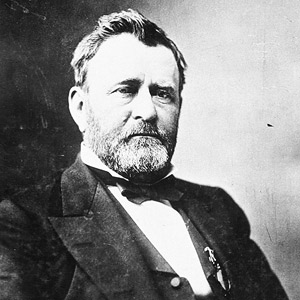
President Ulysses S. Grant was being influenced by outside business interests of Jay Gould and Jim Fisk
Gould and Fisk who had been stockpiling gold investments watched as the price was blowing up. As soon as the government gold reserves hit the market, the price plummeted (5). Almost as soon as it hit the market, investors were ruined. Especially those who had taken loans to purchase those investments. With the steep drop in price, many were ruined almost instantly. One of those most affected by the crash was none other than Abel Corbin, the man who was the go-between and con artist tasked with getting cozy with President Grant (6). Gould came out of the crisis unscathed, having sold off his gold right before more hit the market. Jay Gould’s empire would later expand to include the Union Pacific Railroad, and the Western Union Telegraph Company (7). It was at this time in 1869 that William Hamill was beginning his career in Georgetown. It was also during this time that the silver market in the town began to explode. Within a couple years, Silver was queen, and gold had panned out in Georgetown.
By 1876, Colorado had gained statehood and William Hamill was climbing the Republican ranks. He was elected to the first State Senate in the Colorado legislature. During this integral period in Colorado history, Hamill would be responsible for guiding the new state toward its governmental identity. The party had also guided the nation through the tumultuous period of Southern Reconstruction. The Republican party dominated the Northern Middle and Upper classes, as well as most Northern and Southern African Americans, while most Southern Whites were Democrats (8). However, Congress was a different story, in the span of sixteen years between 1875-1891, control of the House of Representatives switched six times (9). There were small pockets of Southern Republican’s but overall demographically and regionally, the nation was still split politically following the Civil War. The Presidential election of 1876, would further shake up the post-Civil War American political landscape and drive a wedge between Republicans and Democrats.
One of the most contested and disputed American political elections was the election of 1876. The United States was still feeling the psychological and philosophical injuries suffered during the Civil War. In addition, 1876, was the centennial celebration of the Declaration of Independence. The race featured Republican Rutherford B. Hayes of Ohio and Democrat Samuel Tilden of New York. To all outward appearances, it looked as if Tilden was going to win the election and break the Republican grip on the White House (10). On election night Tilden had earned 184 of the required 185 electoral votes and had a lead in the popular vote (11). However, by the next day, neither Tilden nor Hayes was the President-elect. Hayes carried 165 votes (12). Florida’s, Louisiana’s, South Carolina’s and Oregon’s votes were still in dispute, these states constituted twenty electoral votes which could still sway the election to either candidate. Republican’s accused the Democrats of voter intimidation, and bribery especially of African American voters in the Southern states, while Democrats accused Republicans of defacing important ballots from Tilden held precincts in Florida that would have swayed the election for the Democrats (13).
To solve the disputed election, Congress put together an election commission in January of 1877. Five Senators, five Representatives, and five Supreme Court Judges were chosen to determine the Presidency. As if the election already wasn’t controversial, one of the Judges recused himself and was replaced by a Republican-leaning judge. The commission voted 8-7, for Hayes. The result caused the widespread uproar among Democrats. There was an even talk of a filibuster by Democrats during the count of the official electoral votes, to protest the election Hayes. On the extreme end of the reaction, some felt the decision would cause another Civil War. To solve the dispute, the Compromise of 1877 was forged. In the unofficial agreement, the Democrats would accept Hayes’ election, and in return, the Federal Government would remove all Federal troops from the South, provide money to repair what was left of the infrastructural damage left from the war, and Hayes would have to appoint a prominent Southerner to his Cabinet (14). The compromise all but ended Reconstruction in the South. However, with no Federal intervention in the South, harsher oppression of Black voting rights and segregation increased. In the end, Hayes was awarded the 20 remaining electoral votes finishing with the required 185 to Tilden’s 184, despite Tilden’s 2.7 million vote lead in the popular vote. Elections such as the one in 1876 further show the topsy-turvy political condition the United States was in during the post-Civil War years. During this period, William Hamill’s fortune was growing exponentially as well. While the election may have been in doubt, the value of silver was not. Silver Barons such as Hamill and Horace Tabor made out like bandits and often supported the Republican cause in the process.
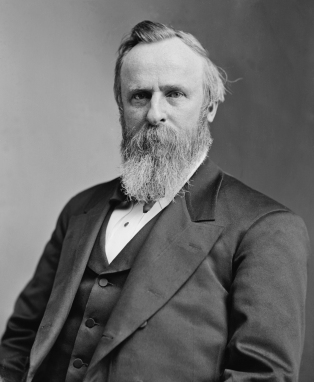
President Rutherford B. Hayes became president after one of the most contested and controversial elections in American history.
In addition to tainted elections and scandalous Presidency’s, industrial big business boomed during this period. As the railroads snaked their way across the nation in an effort to connect “sea to shining sea”, and silver and gold were pouring out of hills particularly in the west, business regulation was an important political issue. In major cities across the country, many people protested the incursion of rail lines into their cities citing safety and health concerns (15). Railroads began to monopolize on their perception of necessity. Instead of opening up the country and providing opportunities for the movement of goods and services, the railroads privatized storehouses and raked in profits from high shipping costs and storage fees (16). The fees and storage costs began to hurt farmers. The argument became political when the Granger’s, a farmers organization, began to protest the high fees and lack of regulation for railroad operations. The organization did not endorse or back one particular party. They would endorse whichever candidate, regardless of party, who would be most favorable to toning down the exploitation of the railroad companies (17). The strategy worked as the Granger’s were able to have majority support in the Illinois State House. They passed the Granger Laws, which capped fees on railroad storage and shipping costs (18). However, the railroads were controlled by Congress and considered Interstate Commerce, therefore no one state could regulate pricing for a private company. The efforts of the Granger Movement led to the creation of the Interstate Commerce Commission in 1887. The ICC, as it was known, regulated interstate transportation fees to reasonable prices. Often times social and political changes converge. This is what happened during the disputes with railroad companies and their high prices of storage and transport. Farmers were unable to afford these exorbitant costs. While it is not usually ideal for the government to dictate costs to a private enterprise, the railroad controversies of the Late 19th Century show the need for political intervention. It is also reasonable to assume that William Arthur Hamill benefitted from the creation of the ICC. His granite and mining interests would require a lot of shipping via the railroad system.
During the national political turmoil of the late 1860’s and 1880’s, William Arthur Hamill began to make moves locally in Colorado. He would raise up as one of the most prominent Republicans in the state. After serving a two-year term in the Colorado State Senate, he declined the nomination for the 1878 campaign (19). His presence had been felt. Hamill was unanimously elected to become the chairman of the Colorado Republican Party. His first task was to make certain that the Republicans were victorious during the 1878 midterm elections. From the outset, it did not look good for the GOP. The 1878 campaign was particularly nasty in Colorado. Personal attacks were thrown from candidates on both sides. Hamill began to shift the focus of the Republican vision from insults to policy. He held the party together and insisted on clean and professional campaigning. Hamill also was able to garner campaign funds even in a climate where it was believed the Republican’s had no chance of winning (20). He believed in his message and in his party’s chances even when no one else would. One of his best moves was to utilize “local organizers” (21). Tapping into the community level throughout the state he hoped to hit every issue the Republicans could seize upon to win. Despite all of the pundits and predictions of a Democratic victory, “Republicans won every state office and the congressional race” additionally, “they acquired 46 of the 62 available legislative seats, guaranteeing the selection of a Republican for the United States Senate” (22). With the resounding success of the 1878 midterms in Colorado, Hamill established himself as one of the most influential political minds in the state.
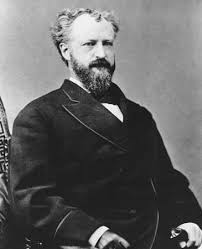
Senator Roscoe Conkling was the leader of the Stalwart faction of the Republican Party. He was considered one of the most powerful politicians of the era.
Hamill deftly handled the squabbles within the Republican Party to pull GOP victory out of the jaws of defeat in 1878. However, on the National level, the Republican party had split into two factions, the Stalwarts, and the Half-Breeds (23). The Stalwarts were led by Senator Roscoe Conkling of New York (24). Conkling had been a Republican since the founding of the party in 1854 and had staunchly supported Lincoln in the 1860 Presidential election. The Stalwart faction considered themselves true Conservatives. Too many other Republicans, they were considered radical in their views on Reconstruction (25). For instance, they wanted the Federal government to seize from slaveholders private land to redistribute among freed slaves (26). This was considered an extreme measure, as Lincoln’s vision for Reconstruction was one of reconciliation and not punishment for the South. Another aspect of the Stalwarts that set them apart was their die-hard devotion to the Spoils system (27). The Spoils System had been in place since the Andrew Jackson Presidency. Coveted Federal jobs would be given to political supporters of an elected official regardless of qualifications.
This system inevitably caused corruption especially in the case of Chester A. Arthur. Conkling wanted to back Arthur for the Chief Collector position for the New York Customhouse. President Hayes did not approve of the appointment, and instead nominated tow of his choices for the job. Conkling rallied the Stalwarts to vote against the President’s choices and give the position to Arthur. Due to the volatile nature of the GOP, President Hayes almost immediately had the Customshouse investigated. It was discovered that widespread corruption existed due to the massive kickbacks Arthur was receiving on the side (28). Conkling then gave the position of New York’s Republican Chairmanship to Chester Arthur in the hopes of getting Arthur to the Senate in 1880 (29). Conkling even tried to concoct a scheme to get U.S Grant a third term.
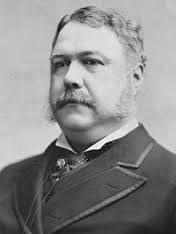
President Chester A. Arthur. Arthur became president with the death of President Garfield. Arthur became Vice President due to the back of Roscoe Conkling. However, he began splitting away from Conkling once he assumed the presidency.
It’s entirely possible that Hamill in his dealings with the Republican party during the elections of the mid to late 1800s, that he ran into characters such as Roscoe Conkling. Especially as William Arthur Hamill began to receive national attention from the Republican Party. He attended the Republican Conventions of 1884 and 1888 as the head of Colorado’s Republican delegation (30). Within Colorado and Georgetown, the first rumblings of a prohibition movement were beginning to grow during the mid-1880s. Hamill and the GOP were staunchly opposed to prohibition and the move ruffled feathers in the town, especially from the Georgetown Courier (31). Editor Jesse Randall was beginning to notice Hamill’s political savvy and his opposition to prohibition and used this to begin an all-out attack on Hamill in the newspaper. During this period, Hamill’s oldest son was making a mockery of himself in town. Randall jumped on the story and used them to attack Hamill on a political and personal level (32). Randall’s attacks on Hamill’s politics during this attempt to paint Hamill as a political boss, in the same vein as New York and Chicago political bosses (33). Apparently, by 1884, the attacks had become so frequent that Hamill contemplated severing ties with Georgetown altogether. He began exploring selling his holdings and his home.
Each era in American politics builds up the previous eras faults and issues. For instance, the era in which William Arthur Hamill fit was still reeling from the American Civil War. Some wanted reconciliation with the South, while others desired punishment. These issues further divided the GOP. In many of the elections of the era, the internal fighting almost derailed several Republican campaigns. William Hamill managed several Colorado campaigns and even rose to a level of national political respectability during this ear. His rise to political prominence and personal wealth in Georgetown coincided with one of the fascinating periods in American political history.
Footnotes:
- “Black Friday”: September 24, 1869”. 2016 http://www.pbs.org/wgbh/americanexperience/features/general-article/grant-black-friday/
- “Black Friday”: September 24, 1869”. 2016 http://www.pbs.org/wgbh/americanexperience/features/general-article/grant-black-friday/
- “Black Friday”: September 24, 1869”. 2016 http://www.pbs.org/wgbh/americanexperience/features/general-article/grant-black-friday/
- “Black Friday”: September 24, 1869”. 2016 http://www.pbs.org/wgbh/americanexperience/features/general-article/grant-black-friday/
- “Black Friday”: September 24, 1869”. 2016 http://www.pbs.org/wgbh/americanexperience/features/general-article/grant-black-friday/
- “Black Friday”: September 24, 1869”. 2016 http://www.pbs.org/wgbh/americanexperience/features/general-article/grant-black-friday/
- “Black Friday”: September 24, 1869”. 2016 http://www.pbs.org/wgbh/americanexperience/features/general-article/grant-black-friday/
- Joseph R. Conlin. “The American Past: A Survey of American History, Volume II: Since 1865”, Boston, Wadsworth Cengage Learning, 2010
- Joseph R. Conlin, 2010, pg 415
- “The Disputed Presidential Election of 1876”, Digital History, 2016, http://www.digitalhistory.uh.edu/disp_textbook.cfm?smtID=2&psid=3109
- “The Disputed Presidential Election of 1876”, Digital History, 2016, http://www.digitalhistory.uh.edu/disp_textbook.cfm?smtID=2&psid=3109
- “1876 Presidential Election”, 270 to Win, 2016, http://www.270towin.com/1876_Election/
- “The Disputed Presidential Election of 1876”, Digital History, 2016, http://www.digitalhistory.uh.edu/disp_textbook.cfm?smtID=2&psid=3109
- “The Disputed Presidential Election of 1876”, Digital History, 2016, http://www.digitalhistory.uh.edu/disp_textbook.cfm?smtID=2&psid=3109
- Joseph R. Conlin, 2010, pg 448
- Joseph R. Conlin, 2010, pg 448
- Joseph R. Conlin, 2010, pg 448
- Joseph R. Conlin, 2010, pg 448
- Christine Bradley, “William A. Hamill”, Colorado State University, The Goergetown Society, Inc.
- Christine Bradley, “William A. Hamill”, Colorado State University, The Goergetown Society, Inc.
- Christine Bradley, “William A. Hamill”, Colorado State University, The Goergetown Society, Inc.
- Christine Bradley, “William A. Hamill”, Colorado State University, The Goergetown Society, Inc.
- Todd Arrington, “Stalwarts, Half-Breeds, and Political Assassination”, The Garfield Observer, The Blog of the James A. Garfield Historical Site, 2012.
- “Roscoe Conkling”, United States History, 2012 http://www.u-s-history.com/pages/h706.html
- “Roscoe Conkling”, United States History, 2012 http://www.u-s-history.com/pages/h706.html
- “Roscoe Conkling”, United States History, 2012 http://www.u-s-history.com/pages/h706.html
- Todd Arrington, “Stalwarts, Half-Breeds, and Political Assassination”, The Garfield Observer, The Blog of the James A. Garfield Historical Site, 2012.
- Todd Arrington, “Stalwarts, Half-Breeds, and Political Assassination”, The Garfield Observer, The Blog of the James A. Garfield Historical Site, 2012.
- Todd Arrington, “Stalwarts, Half-Breeds, and Political Assassination”, The Garfield Observer, The Blog of the James A. Garfield Historical Site, 2012.
- Christine Bradley, “William A. Hamill”, Colorado State University, The Goergetown Society, Inc.
- Christine Bradley, “William A. Hamill”, Colorado State University, The Goergetown Society, Inc.
- Christine Bradley, “William A. Hamill”, Colorado State University, The Goergetown Society, Inc.
- Christine Bradley, “William A. Hamill”, Colorado State University, The Goergetown Society, Inc.
Images:
President Abraham Lincoln from https://www.nps.gov/liho/learn/historyculture/alincolnbio.htm
President James Garfield from https://www.britannica.com/biography/James-A-Garfield
President McKinley from https://www.loc.gov/rr/hispanic/1898/mckinley.html
President Andrew Johnson from http://www.usnews.com/news/special-reports/the-worst-presidents/articles/2014/12/17/worst-presidents-andrew-johnson-1865-1869
President Rutherford B. Hayes from https://upload.wikimedia.org/wikipedia/commons/5/50/President_Rutherford_Hayes_1870_-_1880_Restored.jpg
Senator Roscoe Conkling from https://www.britannica.com/biography/Roscoe-Conkling
President Chester A. Arthur from https://upload.wikimedia.org/wikipedia/commons/thumb/4/48/20_Chester_Arthur_3x4.jpg/220px-20_Chester_Arthur_3x4.jpg





